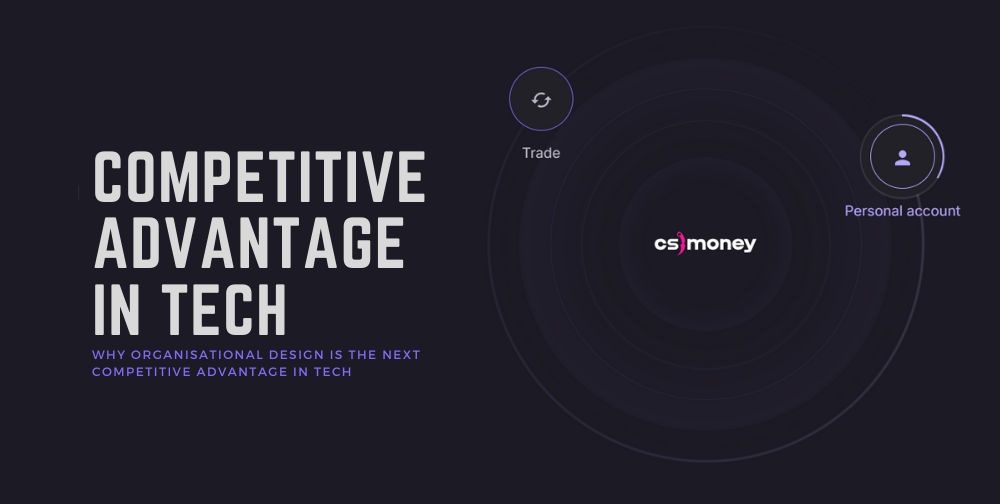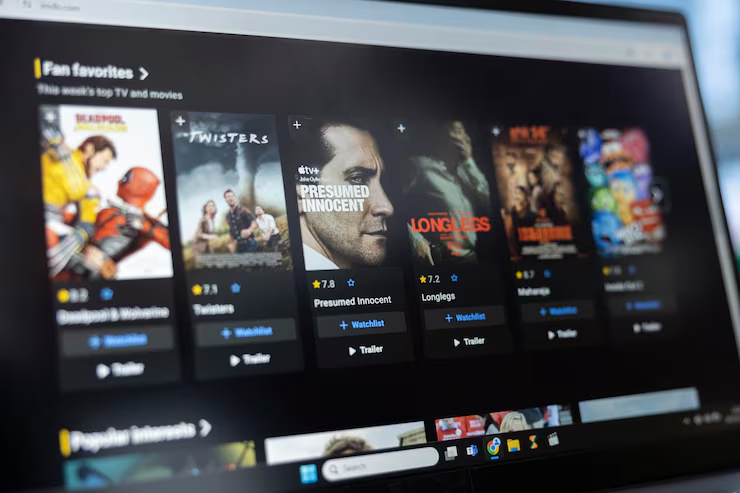Why Organisational Design is the Next Competitive Advantage in Tech

When Sergey Vorobyev talks about companies, he rarely begins with the product. He begins with the organisation. Not in the traditional sense of who reports to whom, but in a deeper, almost architectural sense: how the company breathes, how it decides, how it learns and adapts when the ground beneath it inevitably shifts.
“Everyone focuses on features, on the next AI model, on market penetration,” Sergey says. “But the truth is, features can be copied, products can pivot. What endures is the organisation you’ve built around those things.”
Sergey’s career spans decades in leadership advisory, executive search, and organisational strategy combined with personal involvement in start-ups scaling emerging technologies. But it was his tenure as Chief Business Development Officer at CS.MONEY that put his ideas to the test inside a fast-scaling tech environment.
CS.MONEY is a leading global marketplace where users can exchange, purchase, and manage digital items from online games, particularly within the Counter-Strike franchise. The platform combines real-time trading infrastructure, fraud prevention mechanisms, and integrations with esports ecosystems, enabling a seamless experience for millions of gamers and collectors worldwide. With its roots in the gaming community and its reach extending into fintech and digital commerce, CS.MONEY operates at the convergence of entertainment, technology, and scalable transactional systems.
“When I joined CS.MONEY, the company had all the signs of a successful tech venture: millions of users, significant traction, a brand recognised globally in the gaming community,” Sergey recalls. “But under the surface, like in many fast-growing companies, the internal workings were running on momentum rather than method.”
That’s where Sergey’s philosophy and practice of organisational design came in. Drawing inspiration from Teaming, a framework developed at Harvard Business School, Sergey introduced a series of leadership rituals designed to create alignment across product, engineering, and operations.
Teaming isn’t about bureaucracy, Sergey is quick to clarify. “It’s about creating the rituals that allow organisations to think together. Strategy isn’t just made at offsites: it’s made every week, every sprint, in how teams coordinate, how they reflect, how they decide.”
At CS.MONEY, this meant rethinking how decisions were made, how priorities were communicated, and how teams adapted to the constant flux of the gaming and digital trading sectors. Sergey worked closely with product and analytics teams, guiding them to look beyond surface metrics and into the mechanisms of retention, trust, and user behaviour.
Perhaps most importantly, he cultivated leadership from within. Key team members were trained as Teaming Ambassadors, internal facilitators who helped squads maintain rhythm and reflection, even when growth was rapid and market conditions were volatile. “When you build internal capability like that,” Sergey says, “you’re not just growing. You’re maturing while experimenting not just with products but with organisational formats.”
This internal maturity became critical as CS.MONEY ventured into partnerships with major esports organisations, a space where credibility, speed, and system integrity are paramount. The organisation wasn’t just delivering a product anymore; it was building an ecosystem, and that required a level of coherence that Sergey’s structures made possible.
What stands out in Sergey’s recounting isn’t the metrics or milestones, but the mindset shift. The shift from speed at any cost to sustainable velocity. From decisions made in the heat of the moment to decisions made within a thoughtful, structured framework.
In Sergey’s view, this is precisely where many tech companies falter. “Growth exposes every flaw in your organisation,” he says. “You can’t scale chaos. You have to design your way out of it.”
This is especially true in AI-driven sectors, where the pace of development often outstrips the organisation’s ability to govern it responsibly. Sergey sees this gap widening: “AI is neutral. It’ll accelerate whatever system you already have. If your system is disorganised, AI will just create more confusion, faster.”
For founders, Sergey’s advice is consistent: before scaling your product, scale your organisation’s capacity to think, decide, and adapt. “Start by making your decision-making processes visible. Design feedback loops. Create rituals that hold people accountable: not just for outputs, but for learning.”
Sergey is also deeply aware of the human side of scaling. Growth brings pressure, uncertainty, and the risk of burnout. Without intentional design, organisations not only lose productivity but also culture. “People want to do meaningful work,” he says. “If the organisation is chaotic, they get tired, they get cynical, or they leave. Structure is what keeps the energy renewable.”
His long view is clear: the companies that survive the next decade of technological evolution won’t necessarily be the ones with the fastest product cycles. They’ll be the ones that figured out how to build adaptive, resilient organisations – companies that can absorb shocks, pivot intelligently, and sustain alignment as complexity grows.
As our conversation winds down, Sergey circles back to his foundational belief. “A product is always a work in progress. Markets change. But the organisation – that’s the enduring asset. If you build and evolve that right, everything else has a place to grow from.”
It’s a philosophy grounded not just in theory, but in lived experience. And in a tech world that often values speed over sustainability, Sergey Vorobyev’s message is a timely reminder that the greatest advantage may not be what you build — but how you build the team that builds it on the fly.




